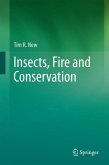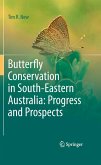A global synthesis of the impacts of wildfires and controlled burning on insects, bringing together much hitherto scattered information to provide a guide to improved conservation management practice. The great variety of responses by insect species and assemblages demonstrates the often subtle balance between fire being a severe threat and a vital management component. Examples from many parts of the world and from diverse biotopes and production systems display the increasingly detailed appreciation of fire impacts on insects in terrestrial and freshwater environments and the ways in which prescribed burning may be tailored to reduce harmful ecological impacts and incorporated into protocols for threatened species and wider insect conservation benefits.
"This book aims to survey current knowledge of the intricate relationships between fire and insect populations and how this knowledge can be applied toward insect management and conservation. ... The well-written book contains numerous graphs, tables, and diagrams, a complete list of references, and a comprehensive index. Summing Up: Recommended. Upper-division undergraduates through professionals/practitioners in fire ecology." (D. L. Richter, Choice, Vol. 52 (9), May, 2015)









